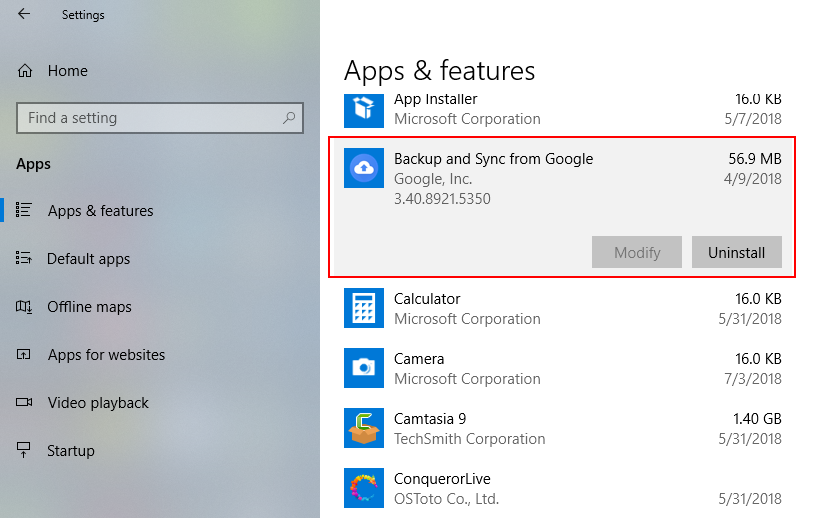
- GOOGLE BACKUP AND SYNC VS GOOGLE DRIVE UPDATE
- GOOGLE BACKUP AND SYNC VS GOOGLE DRIVE SOFTWARE
- GOOGLE BACKUP AND SYNC VS GOOGLE DRIVE OFFLINE
After a successful sign-in, Backup and Sync will ask you to choose folders from your computer to back up to Google Drive continuously.įor example, you can choose Desktop, Documents, or Pictures folders, and it will sync and show up on your Google Drive home.
GOOGLE BACKUP AND SYNC VS GOOGLE DRIVE SOFTWARE
Download the Backup and Sync software using the link below and set it up from scratch. The next time you connect, Google Drive will sync those changes and save your work on the web.
GOOGLE BACKUP AND SYNC VS GOOGLE DRIVE OFFLINE
You can also choose to keep certain files or folders offline for editing while you are not connected to the internet. Drive File Stream allows you to stream files, similar to how you stream movies on demand. This means you’ll use almost none of your hard drive space and spend less time waiting for files to sync. Originally designed for organizations, the Drive File Stream allows you to quickly access all of your Google Drive files on demand, directly from your computer. It provides the same functionality as Drive for Mac/PC and backs up any folder on your computer.

Backup and Sync back up files and photos safely in Google Drive. What Is Google Backup and Syncīackup and Sync is the consumer successor to the Google Photos desktop uploader and Drive sync app and is intended for your account. This post will compare Backup and Sync to Drive File Stream and conclude which software is better suited for you. It will also “result in better performance for end users,” a complaint for some today.If you are getting confused between the two, then you have come to the right place. This unification is meant to simplify the IT deployment process and reduce confusion around which app to use. More details on consumer timelines will be announced closer to availability.Īhead of that, Google Workspace accounts can preview the new beta client by signing up for a preview. The transition will be self-serve for end users. We will provide 3 months’ notice for Google Workspace admins and end users before the deadline to transition to Drive for desktop. We will share more details later this year on how Backup and Sync users can get started with Drive for desktop. We’ll announce when Drive for desktop is ready for Backup and Sync users.
GOOGLE BACKUP AND SYNC VS GOOGLE DRIVE UPDATE
This is currently just a branding change and “all functionality will remain the same,” but the app will get the big update later this year.Īt that time, Backup and Sync users will be transitioned to that new version of Drive for desktop: The changes start with Drive File Stream being renamed as of version 45 - as seen in the screenshots below. Meanwhile, regular users will be able to sync individual files in My Drive for offline use, a dark mode, and see some Microsoft Office and Outlook integrations. Other consumer features coming include syncing local folders (Documents, Desktop, etc.) to Google Drive, and multi-account access. The app previously known as Drive File Stream will be updated to also “back up photos and videos to Google Photos,” as well as upload an Apple Photos library and connected USB storage.

To address this, we’re planning to unify these sync clients later in 2021, bringing the most used features from both Drive File Stream and Backup and Sync to all of our users.Īt a high-level, Backup and Sync is going away in favor of a new “Google Drive for desktop” that’s meant for consumers and business users alike. Some of our Google Workspace customers have deployed both sync solutions, which can be confusing for end users and challenging for IT departments to manage. Last month, we reported that Drive File Stream was being renamed to “Google Drive for desktop.” This name change is part of a broader move in 2021 to unify the current enterprise client with the consumer-focused Backup and Sync app that offers Google Photos upload.


 0 kommentar(er)
0 kommentar(er)
